In our mobile-first world, portable monitors have surged in popularity alongside laptops, essential tools for flexible workspaces, gaming on-the-go, and boosting productivity with setups like a portable second monitor for MacBook Pro. But a common question arises, especially when comparing them to their laptop cousins: Does a Portable Monitor Charge Like a Laptop? The clear answer is no. Unlike laptops which feature built-in batteries and dedicated charging ports, portable monitors operate on different power management principles.
Powering Your Portable Monitor: Charging Options Explained
Portable monitors prioritize flexibility with diverse charging methods. Unlike laptops dependent on proprietary chargers, they support:
- USB-C Power Delivery: Found in top models like best portable monitor for MacBook Pro, these draw power from connected devices (laptops, phones).
- Built-in Batteries: Battery portable monitors like GAEMS portable gaming monitor offer true cord-free use – perfect for travel or outdoor setups.
- External Adapters/Power Banks: When devices lack sufficient output (e.g., Mac Mini, Raspberry Pi), external power bridges the gap.
Power Efficiency Insights
Most 1080p portable computer monitors consume 10-15W, preserving laptop battery life. Brands like ViewSonic portable monitor and AOC portable monitors excel in energy efficiency.
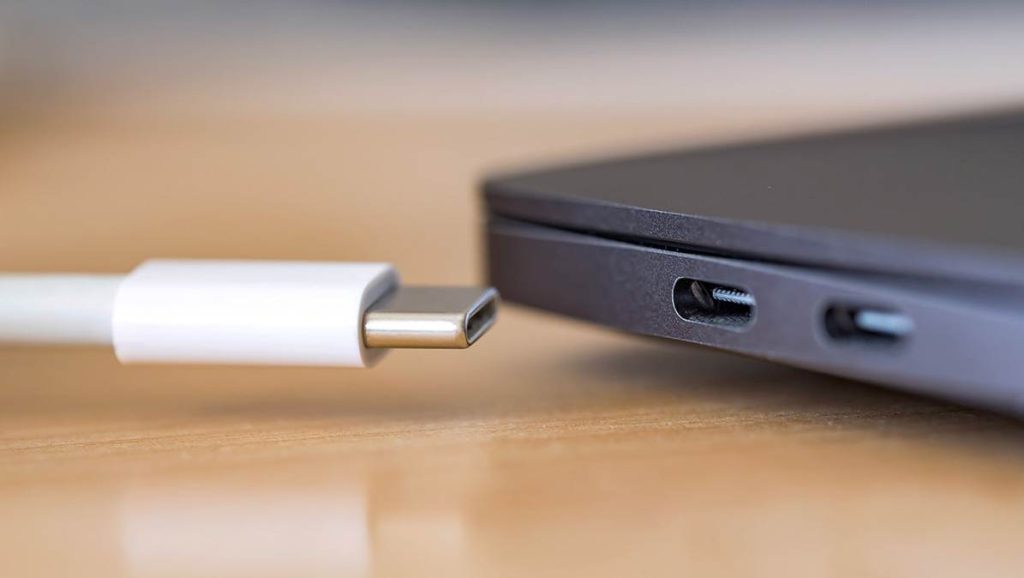
Battery vs. Non-Battery Portable Monitors: Which Suits You?
Battery-Powered Models (e.g., Innoview, Arzopa portable monitor)
✓ Pros: True mobility (no outlets needed), ideal for Xbox Series S gaming or travel. Some double as power banks.
✗ Cons: Heavier/costlier (e.g., OLED portable monitor); limited runtime like 15.6-inch Arzopa Z1RC.
Non-Battery Monitors (e.g., MNN, KYY)
✓ Pros: Slim/affordable – see best portable monitor under $100 picks. No charging anxiety.
✗ Cons: Requires constant power; less suitable for car portable monitor setups.
Tip: Steam Deck/travel users favor battery models; desk setups benefit from lightweight M15 ThinkVision portable monitor.
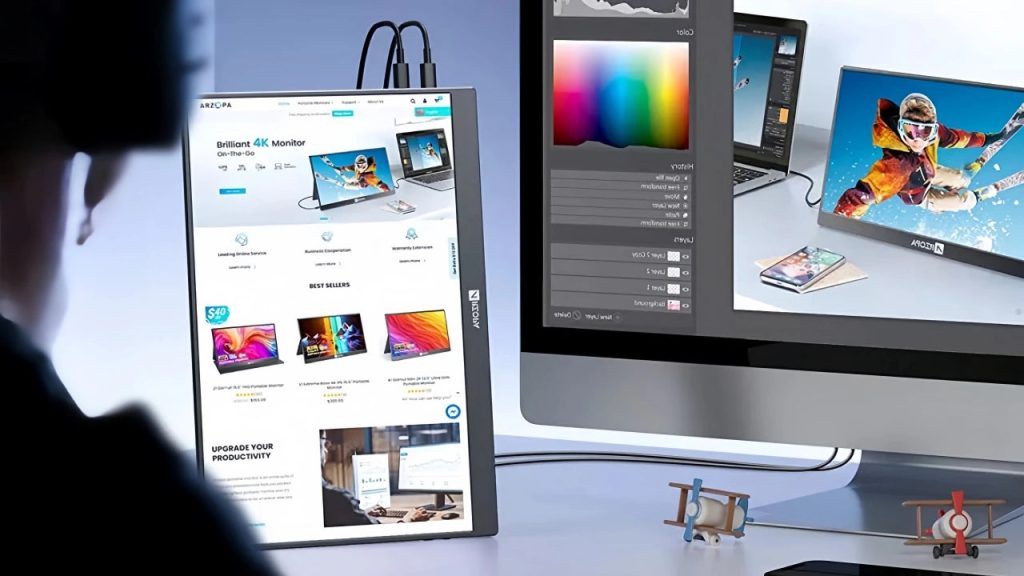
Powering Your Portable Monitor: Charging Options Explained
Portable monitors prioritize flexibility with diverse charging methods. Unlike laptops dependent on proprietary chargers, they support:
- USB-C Power Delivery: Found in top models like best portable monitor for MacBook Pro, these draw power from connected devices (laptops, phones).
- Built-in Batteries: Battery portable monitors like GAEMS portable gaming monitor offer true cord-free use – perfect for travel or outdoor setups.
- External Adapters/Power Banks: When devices lack sufficient output (e.g., Mac Mini, Raspberry Pi), external power bridges the gap.
Power Efficiency Insights
Most 1080p portable computer monitors consume 10-15W, preserving laptop battery life. Brands like ViewSonic portable monitor and AOC portable monitors excel in energy efficiency.
Can Your Portable Monitor Charge Your Laptop?
Modern USB-C portable monitors (e.g., HP portable monitor) may charge laptops via Power Delivery, but limitations exist:
- Power Delivery Support: The portable monitor and the laptop must both be able to use USB-C Power Delivery.
- Power Output: The monitor must be able to provide enough power to charge the laptop properly.
- Laptop Power Requirements: Laptops and high-performance machines often need more power than a portable monitor can provide.
You can charge a laptop using a portable monitor with USB-C.
- Make sure your laptop can charge from a USB-C port.
- Connect the USB-C cable from the monitor to your laptop.
- If necessary, connect the monitor to a power source.
- Look at the charging light on your laptop to see if it’s getting power.
Some portable monitors can charge laptops, but they may not provide enough power for high-performance tasks or to charge the laptop quickly.
USB-C Portable Monitors: Key Features
USB-C has completely changed how we connect and power devices, including portable monitors. Here’s what you need to know about USB-C monitors:
- Versatility: USB-C can carry video, audio, data and power all through a single cable.
- Power Delivery: USB-C monitors can deliver up to 100W of power, but most portable models provide less.
- Compatibility: Make sure your devices can use USB-C Alt Mode for video output.
- Daisy-chaining: Some USB-C monitors let you connect more than one display to them.
To make sure your USB-C monitor can power your device, follow these steps:
- Check the monitor’s power output specifications.
- Check what power is needed for your laptop.
- Use high-quality USB-C cables that can handle the power and data transfer needed.
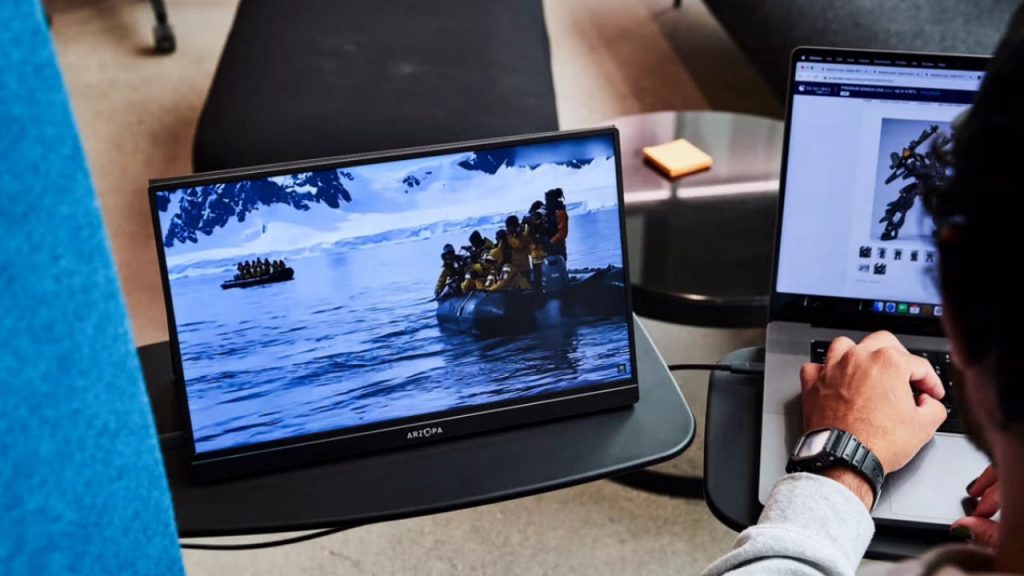
Portable Monitor Power Consumption and Battery Drain
Understanding your portable monitor power consumption is key to preserving laptop battery life. Essential facts:
Power Draw Insights
- Standard 1080p portable computer monitors (like MNN or KYY 15.6-inch) typically use 10-15W
- 4K portable gaming monitors (e.g., Uperfect 17.3″) may reach 20W+
- Screen brightness, resolution, and extras (speakers, portable monitor stand USB hubs) impact consumption
Laptop Battery Impact
- A laptop portable monitor can increase power drain by 20-50%
- Affected by your best portable monitor for MacBook Pro type and system settings
Battery-saving tips for AOC portable monitors or **ViewSonic OLED models:*
- Dim screens – single biggest power reducer
- Lower resolution/refresh rate (e.g., 144Hz→60Hz)
- Disable unused features like speakers
- Pro Tip: MacBook users gain ~30% battery life using clamshell mode (laptop screen off) with your portable second monitor
Top Portable Monitors for Laptop Charging
Many portable monitors can draw power from laptops, and here are some top picks that we tested for you:
- Power Delivery: 65W
- Features: 16.1-inch Full HD display, two Type-C Full Function(Video Data, Power Supply ISDN)

Arzopa Z1FC 144Hz Portable Gaming Monitor | 16.1″ Screen

- Power Delivery: 65W
- Features: Built-in speakers and touchscreen
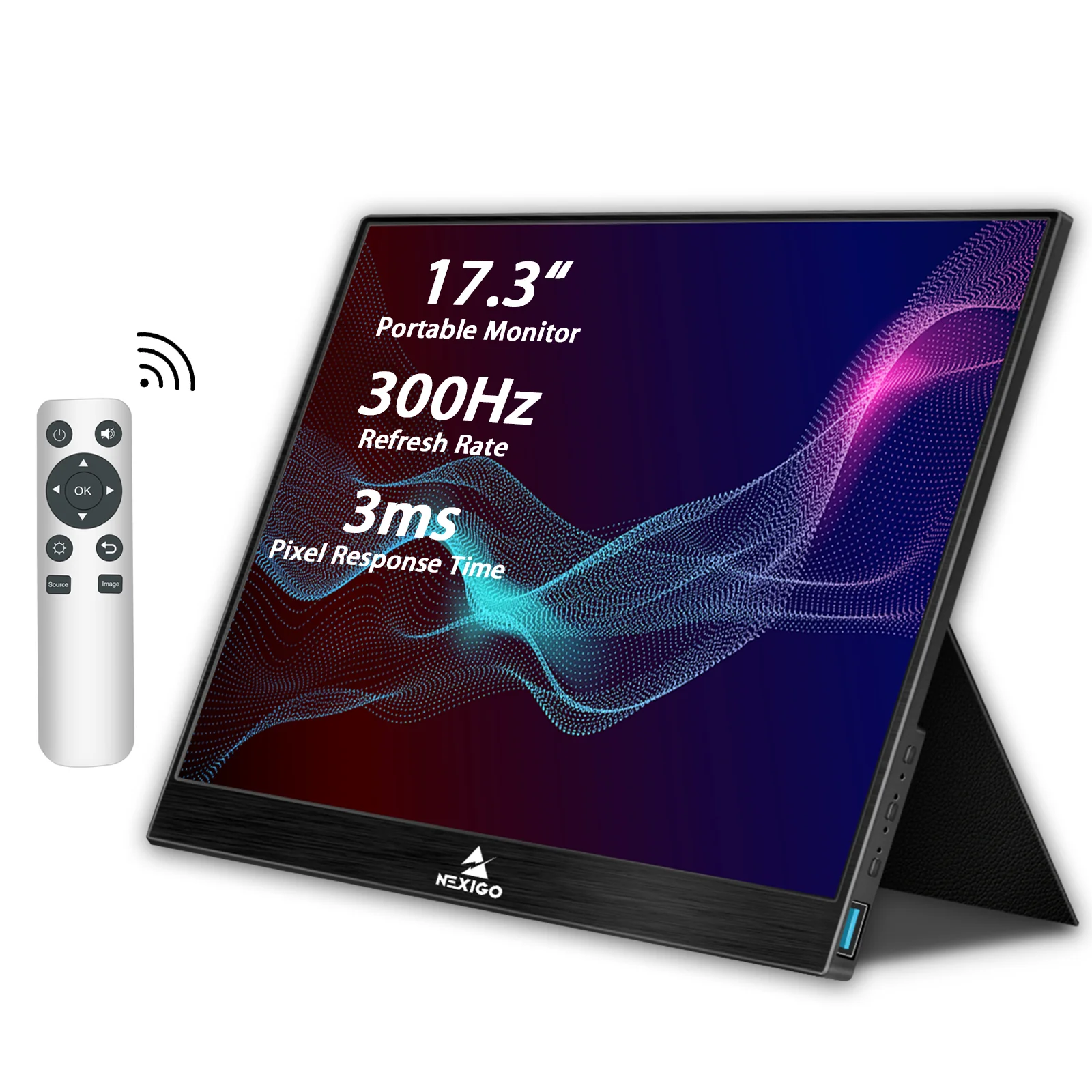
- Power Delivery: 90W
- Features: Built-in Dual Speakers & Kickstand, HDR Technology & Eye Care Screen
When selecting a portable monitor with built-in battery for laptop charging, prioritize these factors:
- Power Delivery: Aim for 65W+ (e.g., C-Force portable monitor for MacBook Pro)
- Resolution/refresh rate matching use (gaming/work)
- Bonus features: speakers, USB hubs like AOC 16T15
- Compatibility: Verify USB-C port support
Hot Topic: Can Portable Monitors Charge Gaming Laptops?
Gaming laptops demand serious power, making charging via portable monitors challenging. Key insights:
Gaming Laptop Power Needs
- Most require 100-300W (higher for MSI portable monitor companions)
- Premium models with robust GPUs often need 180W+
Portable Monitor Limitations
- Standard models (KYY 15.6-inch, MNN portable monitor) deliver just 15-65W
- High-end options like Uperfect 17.3 4K or ViewSonic OLED reach 90-100W
Translation: Only sufficient for: - Entry-level/mid-tier gaming laptops
- Steam Deck or ROG Ally handhelds
- Slow charging during light use
Real-World Compatibility
- Best portable gaming monitors prioritize display over power delivery
- 144Hz portable monitor models drain more power themselves
- For Xbox Series X/PS5 setups, dedicated portable TV monitors perform better
Considerations:
- Power Delivery Capability: The best portable monitors for gaming laptops are the ones with at least 90W power.
- Charging vs. Power Sustainment: While a portable monitor won’t fully charge a gaming laptop, it might help keep the battery level when the laptop is in sleep mode or being used lightly.
- Impact on performance: Using a portable monitor to charge your laptop may make it run slower to save power.
- Extra power: You can get the best results and charge the portable monitor by using it with the laptop’s normal power adapter.
- Check the specifications: Always check how much power your gaming laptop needs and compare this to the portable monitor’s capabilities. Then you can be sure it will charge your laptop properly.
Here are some examples of portable monitors that are suitable for gaming laptops:
- Dell U2724DE Ultrasharp: Offers 90W power delivery
- Philips Evnia 8000: Provides 90W power delivery with a large 49-inch display
It’s hard to find portable monitors that can fully support high-power gaming laptops, but the technology is improving all the time. As USB-C Power Delivery standards improve, we may see more portable monitors that can charge even the most demanding gaming laptops in the future.
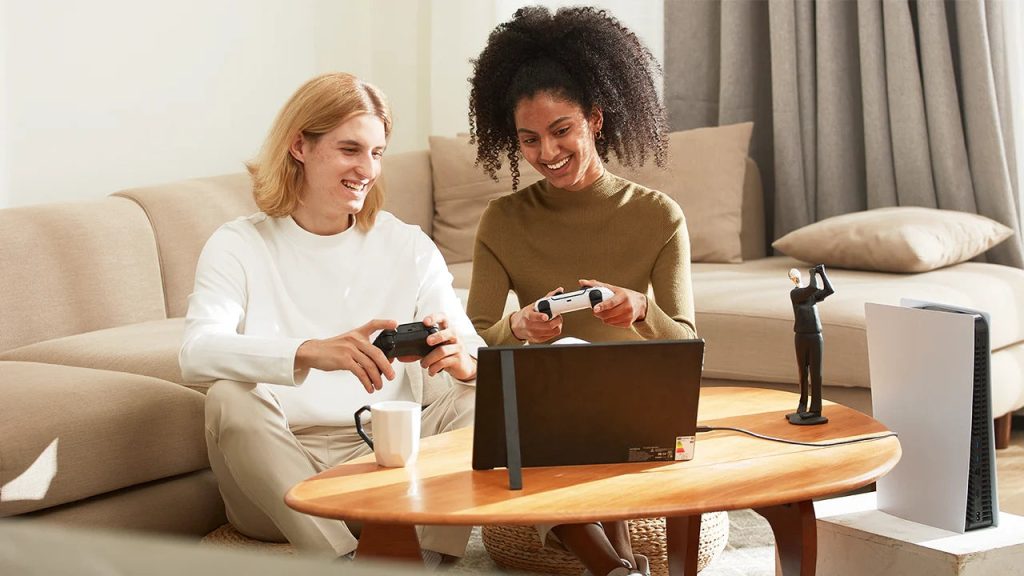
Advanced Q&A: Portable Monitor Charging Solutions
Got charging issues with your laptop portable monitor? Here’s expert troubleshooting:
1. “My laptop won’t charge through the monitor!”
- Ensure both devices support USB-C Power Delivery.
- Verify that you’re using a high-quality USB-C cable capable of power delivery.
- Check if your laptop’s USB-C port is configured to accept incoming power in the BIOS settings.
2. “Extremely slow charging – normal?”
- Some monitors may not provide enough power for fast charging. Check the monitor’s power output specifications and compare them to your laptop’s requirements.
- Reduce the laptop’s power consumption by lowering screen brightness or closing unnecessary applications.
3. “Can it charge gaming laptops?”
- Most gaming laptops require more power than typical portable monitors can provide. However, some high-end portable monitors with 90W+ power delivery might be suitable.
- Always check your gaming laptop’s power requirements before relying on a portable monitor for charging.
4. “Battery drains too fast!” Optimize with:
- Lower the brightness on both displays.
- Reduce the resolution or refresh rate of the portable monitor if possible.
- Use your laptop in clamshell mode (internal display off) when appropriate.
- Consider using a dedicated power bank for extended usage.
5.“Safe for overnight charging?”
- Modern safeguards prevent overcharging
- Still recommended: Unplug portable monitors with built-in battery when full
- Avoid heat buildup with portable gaming monitor 4K units during extended sessions
Remember, optimizing power usage and charging efficiency often requires a balance between performance and battery life. Experiment with different settings to find the best configuration for your specific needs.
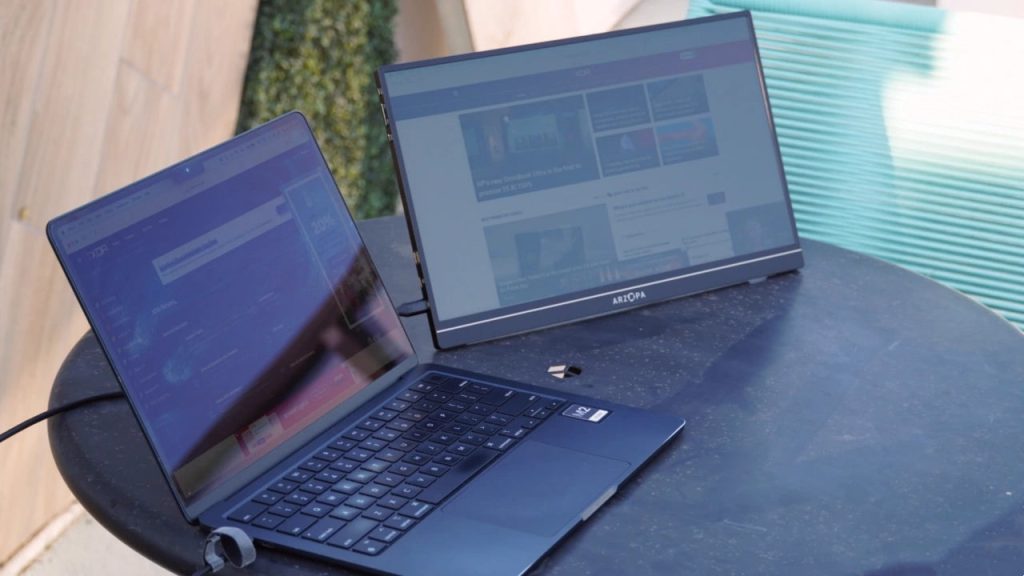
Final Thoughts
While portable monitors don’t charge like traditional laptops, their unique power capabilities significantly enhance mobile workflows. The USB-C Power Delivery feature in best portable monitors revolutionizes setups by charging devices directly – a true game-changer for laptop portable monitor users seeking streamlined solutions.
For gaming portable monitors or portable monitor for MacBook Pro setups, remember most models can’t fully power high-wattage devices. Still, their charging functionality adds valuable versatility to portable computer monitors.
Have questions about portable monitor setup or experiences to share? Comment below! If this helped you understand what is a portable monitor or its charging capabilities, share it with friends exploring portable monitors for laptops. Happy browsing!

Leave a Reply